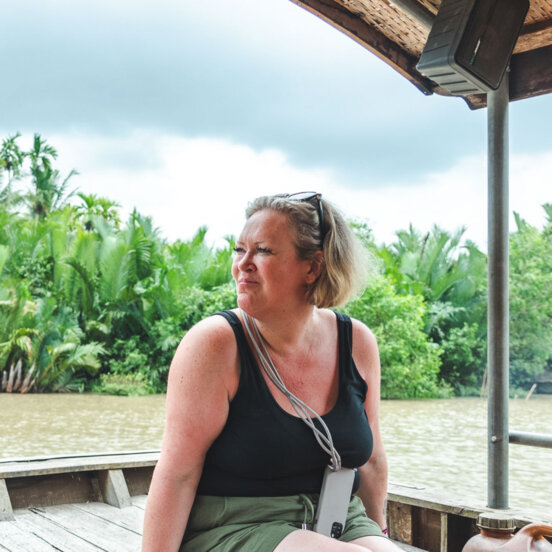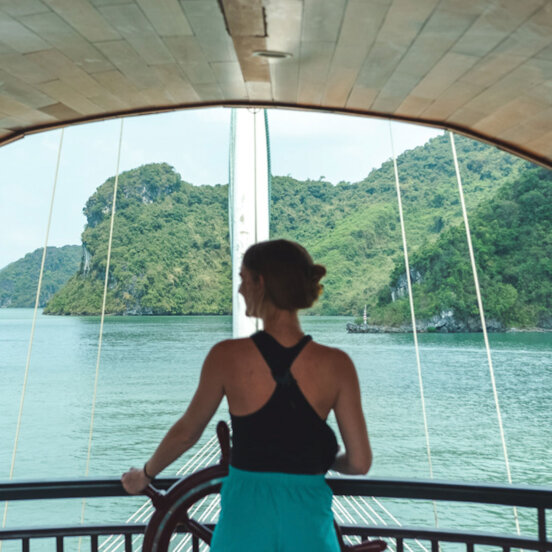In the studio with X Alfonso: Cuba’s genre-pushing, Grammy-winning musician

Over many years of travelling to Cuba, I’ve tuned in to some of the island’s greatest musicians, singing along to virtuoso Beny Moré and his big band hits, dancing to the queen of salsa, Celia Cruz, and skimming through the back catalogue of Buena Vista Social Club, whose soul-stirring lyrics of local son music went stratospheric.
Yet few careers have impressed me more – or represented such boundary-pushing, genre-busting longevity – than X Alfonso. I first met the musician in 2014, on a private tour of his ground-breaking Havana cultural project, La Fábrica.
This year, I caught up with X fresh off the back of his trip to the Latin Grammy Awards in Las Vegas. “To win was incredible,” X beams. “It was a huge surprise though, as we didn’t expect it.”

His album is a blend of symphonic orchestra with Afro-Cuban songs
The 2022 Grammy for Best Folk Album went to their latest, Ancestros Sinfónico, a boundary-pushing feat in musical (and production) terms. X is stoked: “Ancestros Sinfónico is a totally new type of music. A blend of symphonic orchestra with Afro-Cuban songs. This mix is explosive.”
The album is produced and sung by him, along with his sister Eme Alfonso, a solo artist, and Síntesis, the band of their parents, Carlos Alfonso and Ele Valdés. They are a musical family. Síntesis, an Afro-Cuban fusion band, has been widely known and loved on the island for almost half a century, comparable in longevity to the Rolling Stones.
When Covid forced X and his musical family to hit the pause button, they found themselves separated by thousands of miles and living out the pandemic in Spain, Portugal and Cuba.

He came up with the idea for his family to collaborate
“There was a year and four months without playing, rehearsing and we couldn’t go out,” X tells me. “I was in Portugal and kept thinking of my parents who are pure musicians. Their life is music. Before Covid, I’d been working on a piece of work for a small chamber ensemble in Havana. So, I came up with the idea for our family to work together on Ancestros Sinfónico.”
Collectively, they tapped into the 46-year career of Síntesis, choosing 10 tracks from three previous albums to sample. They worked entirely online. Esteemed Cuban composer, Leo Brouwer, lent his critical ear, and the family drew on the wisdom of renowned anthropologist and writer, Natalia Bolívar, for the translation, pronunciation and meaning of the west African Yoruba language.
“The Yoruba language is a mix of seven to eight African languages,” X explains. “When the Spanish and English trafficked slaves from Africa, they brought tribes from Nigeria, the Congo and other regions to Brazil, the States and Cuba”.

Afro-Cuban music comes from a union of Africa, created in Cuba
“On the boats, these tribes had to create a language to communicate among themselves. They also brought their gods with them. The Afro-Cuban religion is totally Africa and Cuba because it was created here. And the Afro-Cuban music – all the songs, words, the legends – comes from a union of Africa that was created in Cuba.”
With the Grammy win for Ancestros Sinfónico, X, Eme Alfonso and Síntesis have ambitions. “As this album was made completely online, the dream is to perform it live with an orchestra, and record and film it,” X says. Look out for it in Cuba next year, with global performances beyond.
Growing up in a very musical family, X was singing and playing around with drumsticks at the age of four. At seven, he enrolled at his first music school. There, he dabbled with groups of musicians and formed a rock and roll band. When he graduated at 15, having studied classical piano, he joined Síntesis covering percussion, bass and vocals.

He quickly built a reputation for blending genres
Not content to be confined to one or two roles, X talks of five, six, seven projects he’d juggle at the same time, as well as writing music for theatre and film. In fact, he won a Goya Award for the soundtrack to the 2005 film, Habana Blues.
X then launched his solo career in the late 90s, quickly building a reputation for blending genres and meshing varied sounds, including hip-hop and jazz to rock and fusion. His first album, Mundo Real, came out in 1999. This was followed by Moré, a homage to Beny, Cuba’s mid-century ‘Barbarian of Rhythm’, and one of the island’s greatest ever musical maestros.
That album won X a Latin Grammy nomination in 2002 for Best Rap/Hip-Hop album, Best Producer and Best Engineered album. After four more albums – followed by almost a 10-year break – Inside was produced in 2020 in a ground-breaking way: taking a year and a half to make, with one single released each month.

X turned his attention to Cuba’s extraordinary creative talent
Why? I ask X. “Information is so rapid these days. People get an album and maybe only focus on one song out of 10. But I worked on this in a deliberately slow way so people could focus on all of them. Also, the visual art that accompanies each song takes time.”
A ten year gap is a long time to down instruments. But it wasn’t a break, exactly. X dipped into photography, cinema, shorts and documentaries, and turned his attention to Cuba’s extraordinary creative talent. Walking Havana’s streets, he interviewed musicians, dancers, painters and theatre directors about their hopes and dreams, recording it all for the documentary, Sin Título, in 2009.

La Fábrica is still one of Havana’s most extraordinary projects
This inspired a couple of live shows, which got X thinking about a permanent base for this homegrown artistry. He lucked out, with a giant former cooking-oil factory in Havana’s El Vedado neighbourhood, close to the Almendares River.
The Fábrica de Arte Cubano (FAC) – which translates to Cuban Art Factory – is owned by the Ministry of Culture, but is run on profits drawn from the private bars and restaurants that trade within its walls. X is the cultural director.
La Fábrica opened to the public in 2014. It’s still one of the most extraordinary projects in Havana since the Revolution of 1959. It’s a cavernous space, accented with street art, design and photography, is loved by Cubans of all stripes, and curious visitors.

Time magazine named it one of the 100 best places to go
They come for the live music, avant-garde dance, fashion shows, theatre, photography, indie stores, bars and restaurants – and, of course, the great vibe. During the summer, some 1,500 children attend free workshops, covering fashion, dance, DJing and storytelling.
With a scheduled closure every three months, the venue morphs and reemerges with “a new Fábrica” at every reopening, X says. It’s so brilliant that Time magazine named it one of the 100 best places to go in the world in 2019. And, even now, years after it first opened, it’s still at the top of its game – much like its creative director.
You can visit X Alfonso’s pioneering La Fábrica project on Flash Pack’s eight-day Cuba adventure, where you’ll also cycle and salsa dance through Havana and hike the Viñales Valley.
Got a story or adventure that could inspire a solo traveller like you? Tag @flashpack on social or email [email protected] to be featured.
Images: Larisa López, Fábrica and X










